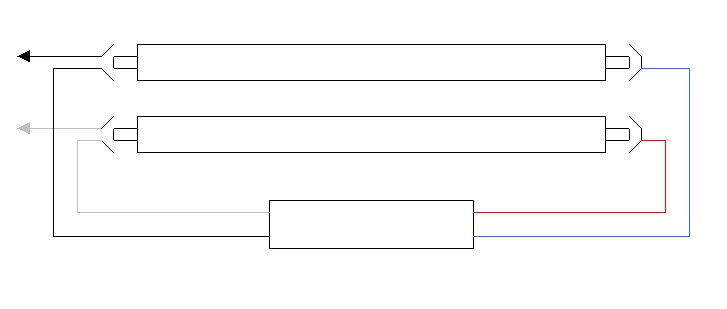Okay, here goes:
1) A typical 2-tube, 8' fluorescent with circuit-interrupting lampholders. Note that we have not bonded the neutral yet, so everything is floating at this point.
2) Now, we short one of the ballast output wires to the fixture housing, and thus to the panel enclosure through the system EMT. There is a few hundred volts between the supply neutral and the ballast's blue wire, and thus between the neutral and the panel enclosure, aka ground.
The neutral bus in the panel exhibits this voltage to ground, but the light still works since there is no conductive pathway between the pinched ballast wire and the supply neutral.
3) Now, we bond the neutral as required, and we have suddenly interconnected the ballast's blue wire and the supply neutral, effectively shorting out at least part of the fizture. I don't recall whether it was the blue or red wire, but I'm sure either one would extinguish at least one lamp.
Please let me know if this doesn't do it. The next step would be a demonstration with a real fixture, but I'd rather not have to do that.








